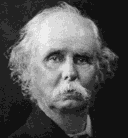Which companies will thrive in the coming years? Those that value ideas above all else
Adam Smith, the arch-capitalist, didn't like corporations. He wrote in 1776 in The Wealth of Nations that they breed ''negligence and profusion'' and ''scarce ever fail to do more harm than good.'' In his day, governments handed out corporate charters rarely and grudgingly. But a century later, as the required scale of enterprise grew, corporations came to the fore. They built railroads, steel mills, refineries, and other businesses of unprecedented size. In so doing, they played an indispensable role in what University of California at Berkeley economist J. Bradford DeLong calls the ''central fact'' in 20th century economic history: the greatest increase in material wealth ever.
Now the Industrial Economy is giving way to the Creative Economy, and corporations are at another crossroads. Attributes that made them ideal for the 20th century could cripple them in the 21st. So they will have to change, dramatically. The Darwinian struggle of daily business will be won by the people--and the organizations-- that adapt most successfully to the new world that is unfolding.
This Special Double Issue is an attempt to peer into the future to describe the look and feel of 21st century corporations. We draw on the insights of CEOs, venture capitalists, academics, consultants, and, of course, the cubicle dwellers who do the work. We look at management via the Web, the workplace of the future, the battle for talent, the ecosystem in which corporations will exist, job titles of the future, and much more. Our aim is to provide readers with insights that could help their own companies thrive in the decades ahead.
VIRTUAL VALUE. Let's start with the most important force of all: the growing power of ideas. In Adam Smith's time, most people worked on farms. Later, industry was ascendant. But the advanced economies have gotten so efficient at producing food and physical goods that most of the workforce has been freed up to provide services or to produce abstract goods: data, software, news, entertainment, advertising, and the like. You can see it in the statistics. The share of U.S. capital spending devoted to information technology has more than tripled since 1960, to 35% from 10% (chart). Fields such as biotechnology are booming. The U.S. Patent & Trademark Office hands out 70% more patents--about 170,000 last year--than it did just a decade ago.
People are cranking out computer programs and inventions, while lightly staffed factories churn out the sofas, the breakfast cereals, the cell phones. The physical content of the gross domestic product seems to be vanishing like Lewis Carroll's Cheshire cat. Although the U.S. is still often called an industrial economy, the Bureau of Labor Statistics projects that by 2005, the percentage of workers employed in industry will fall below 20%, the lowest level since 1850. And the long lull in productivity growth seems behind us. If productivity increases 3% a year--below its recent rate--the average output per hour of work will double in 25 years. That will translate directly into higher living standards.
The turn of the millennium is a turn from hamburgers to software. Software is an idea; hamburger is a cow. There will still be hamburger makers in the 21st century, of course, but the power, prestige, and money will flow to the companies with indispensable intellectual property. You can see it already. At the end of last year, Microsoft Corp. (MSFT), with just 31,000 employees, had a market capitalization of $600 billion. McDonald's Corp. (MCD), with 10 times as many employees, had one-tenth the market cap. Or take Yahoo! Inc. (YHOO)--a virtual place in a virtual medium, the Internet. Although far below its peak price, Yahoo trades at more than 40 times book value. If USX Corp.'s U.S. Steel Group (X) traded at the same multiple to book as Yahoo, its market capitalization would be nearly $90 billion, instead of less than $2 billion.
In an economy based on ideas rather than physical capital, the potential for breakaway successes like Yahoo is far greater. That's because ideas, like germs, are infectious. They can spread to a huge population seemingly overnight. And once the idea--say, a computer program--has been developed, the cost of making copies is close to zero and the potential profits enormous.
With the possibility of gargantuan returns, it's no wonder that idea-based corporations have easy access to capital. The pool of investable money has been swollen by the rising tide of wealth around the world, coupled with a new culture of investing. U.S. companies received nearly $50 billion in venture capital last year, 25 times as much as in 1990. The amount of money raised in U.S. initial public offerings last year, nearly $70 billion, was 15 times the amount in 1990. Both records are certain to be broken this year.
The sheer abundance of capital could be bad for the capitalists themselves, including ordinary investors in the stock market. That's because the commodity they supply--money--is no longer scarce. What's scarce are the good ideas. Thus, shareholders are likely to lose some power in the 21st century, while entrepreneurs and idea-generating employees gain it. Huge bonuses and option grants to key employees are early evidence of the trend. Raghuram Rajan, an economist at the University of Chicago's Graduate School of Business, says it may be time to rethink the conventional wisdom that shareholders are entitled to all the profits of a corporation. Charles Handy, the British author of The Age of Unreason, even suggests that some corporations might become more like voluntary associations, run for the benefit of their working ''members.''
''FIGHTING ISSUE.'' The rising importance of ideas creates all kinds of difficulties for corporations. Books, music, and software are devilishly difficult to create--and diabolically easy to copy. China, for instance, is a counterfeiting machine. And now so is the Internet, thanks to services that enable people to download music, movies, and software for free. The legal battle over the biggest of the music piracy havens, Napster Inc., is a sign of things to come.
Theft of intellectual property is lethal to innovation. Yet overly strict enforcement of intellectual-property protections can dampen innovation as well by letting the property owners get lazy. Chuck D, the lead rapper for Public Enemy and a supporter of Napster, complains that record companies often buy rights to songs and then let them languish. To keep the Creative Economy growing, governments will have to strike a delicate balance: enforce patents, copyrights, trademarks, and noncompete clauses to preserve incentives to create, but not so much that it suppresses competition. ''Intellectual property is going to be the big fighting issue'' of the coming decades, predicts Lester C. Thurow, a Massachusetts Institute of Technology economist.
In the Creative Economy, the most important intellectual property isn't software or music or movies. It's the stuff inside employees' heads. When assets were physical things like coal mines, shareholders truly owned them. But when the vital assets are people, there can be no true ownership. The best that corporations can do is to create an environment that makes the best people want to stay.
Of course, not everyone will benefit equally from the shift to an information-based economy. High school grads' median weekly earnings are 43% less than those of college grads, far worse than the 28% gap in 1979. And education is likely to become even more essential to prosperity in the future. The five fastest-growing occupations in the U.S. are all computer-related, according to projections of the Bureau of Labor Statistics. Corporations faced with a shortage of skilled help are likely to respond through a combination of training, exporting work offshore, and looking for ways to ''de-skill'' certain jobs. Fast-food cashiers, for instance, punch buttons for food items rather than keying in prices.
A NEW MIX. A chronic shortage of skilled help will be accompanied by a change in the mix of people in the workforce. The long-term trend toward earlier retirement has recently been reversed, with more older people looking to stay at work or return. Overall, a record 67% of the adult population is employed or looking for work, mainly because female participation in the labor force has jumped to 60% from about 50% two decades ago. And the ethnic mix of the workforce is changing, partly because the great American jobs machine is sucking in immigrants. The Census Bureau projects that by 2050, 53% of the U.S. population will be non-Hispanic whites, down from 74% in 1995.
The corporations that thrive will be the ones that embrace the new demographic trends instead of fighting them. That will mean even more women and minorities in the workforce--and in the boardrooms as well. Ted Childs, who runs IBM's (IBM) global diversity program, claims there are 350,000 unfilled jobs in the U.S. information-technology industry. ''I believe we're in a war for talent,'' he says, ticking off various IBM projects to develop talent among women, blacks, Asians, homosexuals, and other groups. ''None of this is charitable.''
The 21st century may see the emergence of a kind of ''welfare capitalism,'' in which corporations try to recruit and retain employees by providing services that in another era were provided by government agencies or families: assistance with child care and elder care, valet services, and so on. Their employees will handle more personal matters at work, and more work matters at home: The man in the gray flannel suit is becoming the man in the gray flannel shirt. Even floor plans are going New Age at places like SEI Investments Co. in Oaks, Pa. Computer linkups drop from the ceiling, and employees move from place to place as their assignments change.
While some freelance workers will jump from job to job like hired guns, companies like IBM and Sun Microsystems Inc. (SUNW) want to have a core of careerists to provide continuity. ''Enduring relations with employees become an enormous asset, because those employees are what connects the company to its partners,'' says James N. Baron, a professor at Stanford University's Graduate School of Business.
And just as companies want to hang onto a core of permanent employees, they'll want to retain some key business functions in-house as well. Forget the vision of the entirely ''virtual'' corporation in which nearly everything is outsourced. Clayton M. Christensen, author of The Innovator's Dilemma, points out in an essay written for this issue (page 180) that outsourcing won't work for cutting-edge products whose specifications are in flux.
Still, corporations in the 21st century will evolve new forms of close interaction. Silicon Valley is the exemplar of a new kind of interdependence: Skilled engineers jump between companies as easily as switching desks, and as they do, they spread ideas. ''In some ways, Silicon Valley performs as a large decentralized corporation,'' Philip Evans and Thomas S. Wurster of Boston Consulting Group Inc. write in their new book, Blown to Bits.
THE REAL ASSET: IDEAS. In the same way that the economy is losing weight--software instead of steel--corporations are getting lighter, too. They're able to generate lots of revenue and profit off a small base of assets and employees. Despite the merger wave of the 1990s, the most valuable companies in America aren't bigger by employment than the most valuable companies of a decade earlier. Comparing the 100 U.S. companies by market cap in 1989 with the corresponding group in 1999, the number of employees fell 3%, while the collective market cap rose 500%, according to data supplied by The McGraw-Hill Companies' Standard & Poor's.
Some of these trimmed-down businesses may emerge as more powerful than any corporations ever have been. In the industrial past, there were natural limits to the power of a strategically placed corporation. A corporation was restricted in how many businesses, or customers, or suppliers it could draw into its sphere of influence because there were natural limits on how many could be granted access to its crucial asset--say, a railroad terminal.
But in the Creative Economy, the power to exert influence is nearly unlimited because there's no ceiling on how many people can be made to depend on idea-based assets, notes the University of Chicago's Rajan. An example: America Online Inc.'s instant-messaging system. Companies will exercise power by sharing--or withholding--crucial intellectual property.
Global corporations will try to take advantage of their transnational status to operate beyond the control of national governments. They can play governments off one another through their decisions about where to locate factories or research labs. And many use unrealistic transfer prices to shift income from high-tax jurisdictions to low-tax ones. Last year, a General Accounting Office study reported that from 1989 to 1995, an outright majority of corporations, both U.S.- and foreign-controlled, paid zero U.S. income taxes.
For all the talk of a brave new world, nation-states aren't going away in the 21st century. So it's a good bet that there will be repeated clashes between corporations and the countries--and people--that play host to them. In response to the globalization of business, governments may coordinate their efforts to regulate corporations on issues ranging from taxation to pollution.
Of course, corporations have always been easy to hate. In 1612, British jurist Sir Edward Coke complained that they ''have no soul.'' In the 1960s, Martin Luther King Jr. warned of the alienation produced by ''gargantuan industry and government, woven into an intricate computerized mechanism.'' The past year's outcries against globalization spell trouble for transnationals ranging from Coca-Cola Co. (KO) to Exxon Mobil Corp. (XON), and there's no sign they're diminishing.
Still, corporations have a way of flourishing under changing circumstances. While some will go down with the dinosaurs, the corporate form itself has a good deal of flexibility. Many corporations have already begun to adjust to the new realities of the Creative Economy--by allowing power to tilt from the sources of capital toward the sources of ideas, by embedding themselves in fertile corporate ecosystems, and by adopting codes of social responsibility to win the trust of a wary public. Legally, a corporation is a person--a person who is potentially immortal. Let's see how these ageless characters handle the next 100 years.
By PETER COY

























































































































































